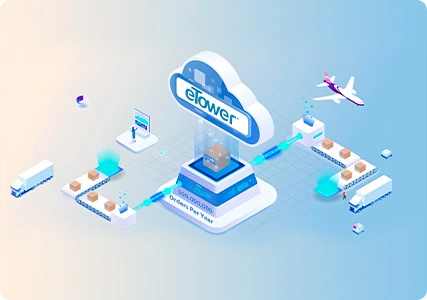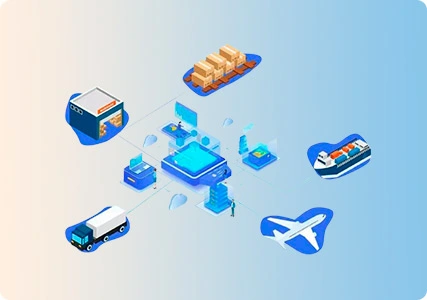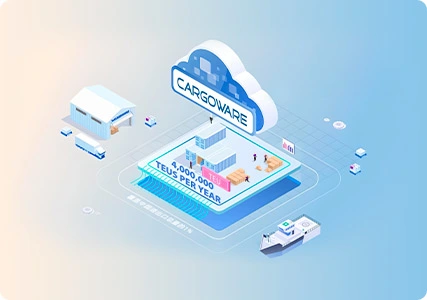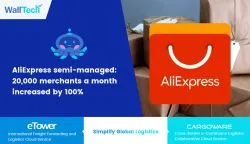Shipping software is a solution that integrates with your e-commerce platform to provide shipping estimates for your products parcel. The parcel shipping software also allows you to print transport labels from your computer.
Shipping software is usually available on a subscription basis, so you will pay a monthly or annual fee. The specific costs and functions will vary depending on the service you choose
Benefits of using a parcel shipping software
Real-time freight
Shipping solutions are combined with popular carriers to provide the latest shipping calculations. When your order is imported into your transport solution, these rates will be calculated automatically based on the specifications regarding product weight, size and customer address.
Quick Find Transport Options
Transportation solutions do not just calculate a freight. You will see a wide range of transportation options, all at different speeds, from different carriers, and with different priorities.
Lower freight
Most popular transportation solutions have been arranged with large carriers to provide discounted freight to their customers. These discounts can be as high as 70% of the normal price.
Reduce transportation costs:
Many e-commerce vendors use a single carrier for delivery because it reduces the complexity of tracking goods to different websites.
However, the shipment tracking software allows you to integrate as many courier companies as possible. Therefore, you can select the best carrier for your order at the most favorable price and be able to track all carriers on one dashboard.
Purchase and print labels in warehouse
Transportation solutions allow you to purchase and print transport labels from your work computer. You can also print packing slips to include in your shipment.
Batch Printing Options
Print hundreds of packing slips and shipping labels at one click.
Custom transport materials
It allows you to customize your transport packages, transport label templates, print in custom formats, and more. Therefore, you can use your company logo on all transport materials to gain better brand recall value for your customers.
International shipping characteristics
If you are transporting across borders, make sure that your transport solution is integrated with international carriers.
Cloud-based data reporting:
You can analyze the past delivery data stored in the cloud anytime, anywhere. Get reports on the delivery status and delivery performance of shipments, calculate the average delivery time, extract shipment data, and so on, and know where you most often ship and how much your shipments often cost.
Time efficiency:
When you can manage all shipments through one software, you can save a lot of time, reduce confusion and increase business.
Gain visibility and customer satisfaction:
Tracking freight through a single platform makes the monitoring smooth. You can track delivery progress and update customers with any delays associated with their orders.
Centralized Dashboard Batch Settings
It is easy to make mistakes and annoying to retrieve data from different express websites. However, if you are using freight tracking software, all details stored in the past will be displayed on a dashboard in front of you. You can perform operations such as batch import and export of shipment details, batch generation and printing of transportation labels, and printing of batch transportation lists.
Automatic updates and notifications:
It allows you to send notifications to customers directly from the dashboard when there is any change in the order delivery status. You can also send delivery notices to your customers via email, SMS and mobile app notifications. Set reminders so that when a shipment expires or at any time, a specific shipment will be delivered by a specific carrier. It enables you to reduce manual dependencies and resolve workflow bottlenecks when transporting packages, allowing your team to perform tasks in the best way without having to remember routine tasks.
API for integrated tracking:
It allows you to integrate with your inventory software or your website to display real-time shipping updates to your customers.
Cross-border transportation
Many businesses find it tedious to handle transportation and fulfillment in their own countries/regions. Imagine that this challenge is expanding to other parts of the world. Cross-border sellers add complexity to customs in many other things.
Customs can be intimidating
Merchants should know exactly why their products are classified, HS code, and there are some systems to calculate the tariff of this specific item, and then ensure that it reaches the customer without paying any unexpected expenses, because the liability calculation is incorrect. This is where cross-border solutions work. Merchants can use cross-border solutions to calculate taxes and print all necessary customs documents so that orders can pass through customs quickly and easily.
localization
This allows businesses to localize their websites to 60 different countries - which means that languages, currencies and even transportation options are fully localized. They are even responsible for delivering packages overseas and to customers, so you only need to deliver packages to them
Connectivity
These systems connect the shipper with the carrier and the supply chain software provider. The correct system will enable the shipper or logistics service provider to meet the customer's transportation requirements from the multi-carrier package management system, and there should be no limit to how many carrier service integration the system can manage. The system will automatically determine the carrier that can provide the most favorable price to a specific region according to the shipper's business rules, and ensure that each batch of goods conforms to the label and communication standards of each carrier, as well as any applicable trade regulations. This provides shippers and logistics service providers with the flexibility to quickly join new carriers or carrier services in the event of supply chain disruption, and provides them with the flexibility required to adapt to the growing traffic volume.
Scalability
Enterprises with growth thinking need transportation technology that can support companies when the volume and complexity of transportation increase. The cloud multi-carrier package management system enables high-growth enterprises to quickly seize opportunities and respond to threats without the need to navigate manual processes or extract data from cumbersome systems. The cloud multi-carrier package management system provides scalability, agility and lower total cost of ownership, so that companies can avoid a lot of IT costs, and enable them to handle growth in their own way by using flexible technologies that can be expanded with the company.
Accessibility:
Deploying cloud-based systems can compete fairly, because organizations of any size can access various operator services. In addition, the cloud multi-carrier package management system only requires Internet access. Users do not need to use VPN or in the office network. This flexibility allows everyone around the world, from the transportation team to customer service representatives, to access the transportation business 24/7. In a dynamic transportation environment, access will lead to on-time delivery.
Reliability:
Cloud multi-carrier package management system providers deploy their solutions across multiple data centers to ensure 100% uptime. If there is a large-scale power outage or weather-related interruption, the shipper can still access the multi-carrier package management system and its data to ensure that the delivery KPI is still in sight.
Rapid implementation:
The implementation time of a cloud-based multi-carrier package management system is much faster than that of a managed or hybrid solution. In essence, it is ready from the moment the contract is signed. SaaS solutions can be deployed in just a few weeks, while hosted or hybrid solutions can take months. In terms of continuous sharing and management of transportation data, the cloud multi-carrier package management system is more timely. This means that the shipper can obtain dual benefits: saving time in the early stage and saving time in the long term.
Fast return on investment:
Because of low upfront cost and rapid implementation, cloud systems can generate rapid return on investment (ROI). In fact, one of the main advantages of cloud is to save money. For many organizations, low total cost of ownership (TCO) is the main and most attractive advantage of cloud multi-carrier package management system, because companies can save human resources to provide services for applications and save total operating expenses (OPEX).
Improve decision-making:
The operation team can use the operational reports and dashboards provided in the cloud multi-carrier package management system to improve transportation decisions. The right system will include business intelligence tools and technologies, which can shorten the time to obtain information, create a single source of facts, and support business operations through high-quality data, thus improving agility and driving KPI. Specifically, a business intelligence platform is in the cloud. The multi-carrier package management system will understand how the distance, delivery speed, density and package size and other components affect the expenditure in the transportation carrier landscape, visualize the way and location of the plan (or should) change, and retain this information as a "configuration file", allowing the shipper or logistics service provider to negotiate with the carrier.










